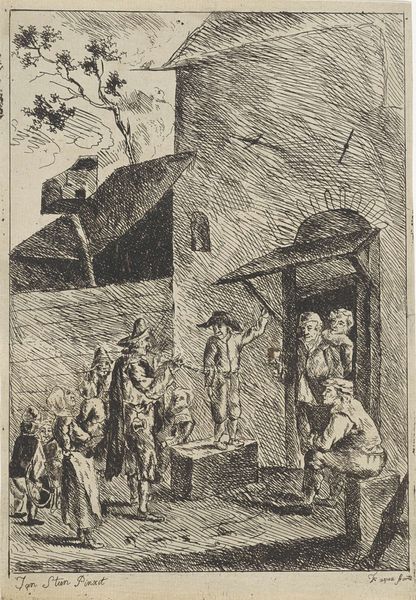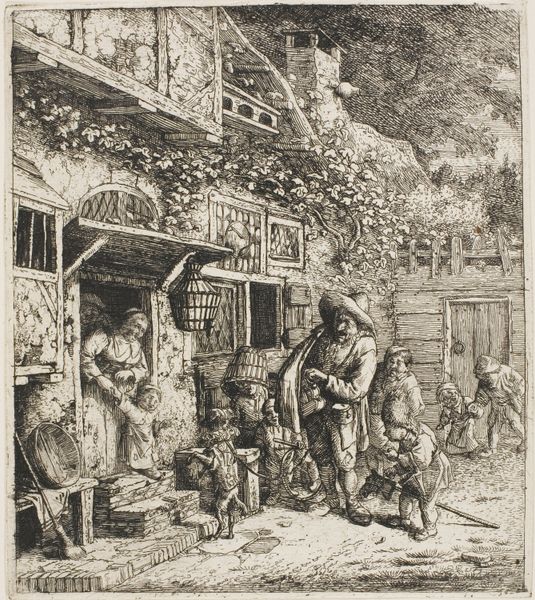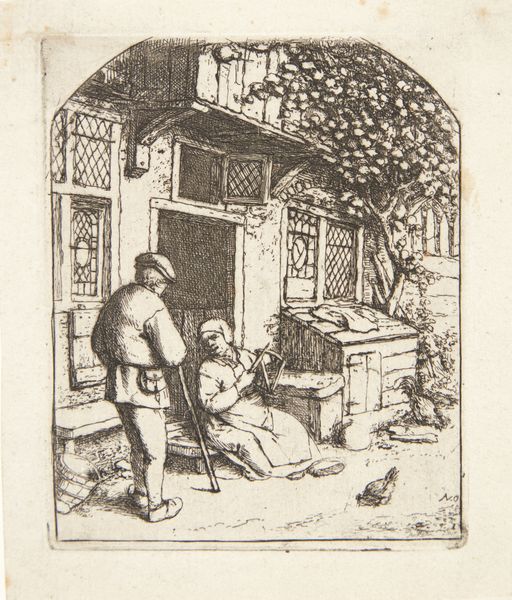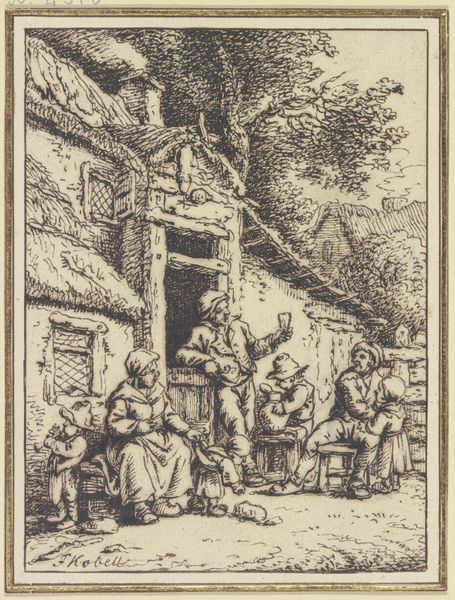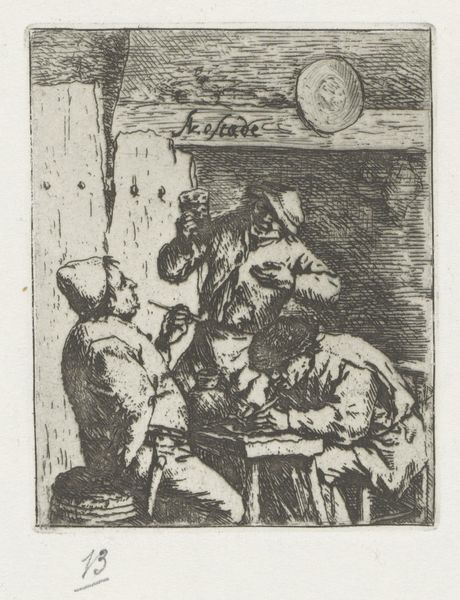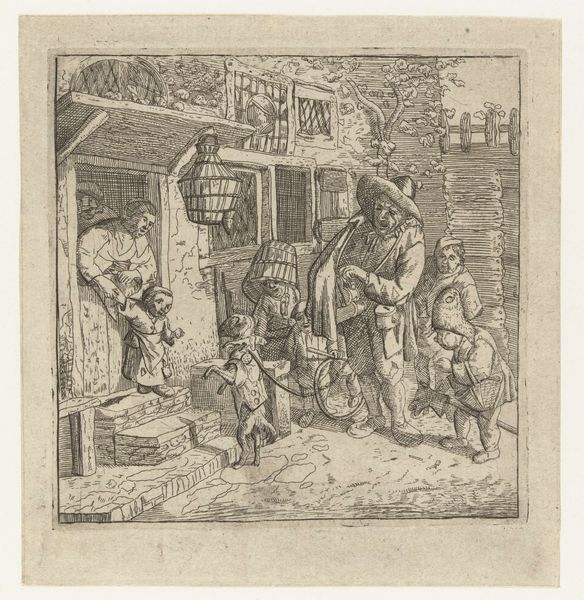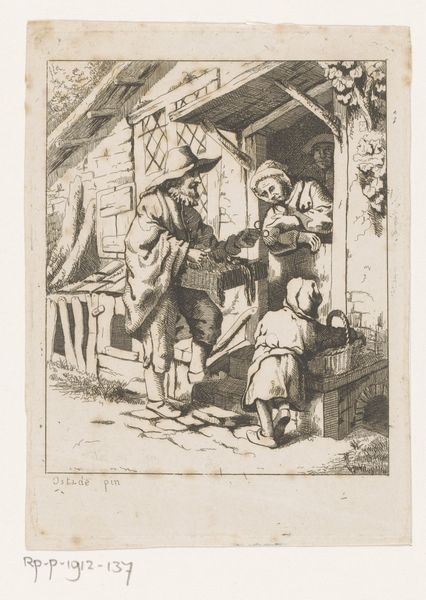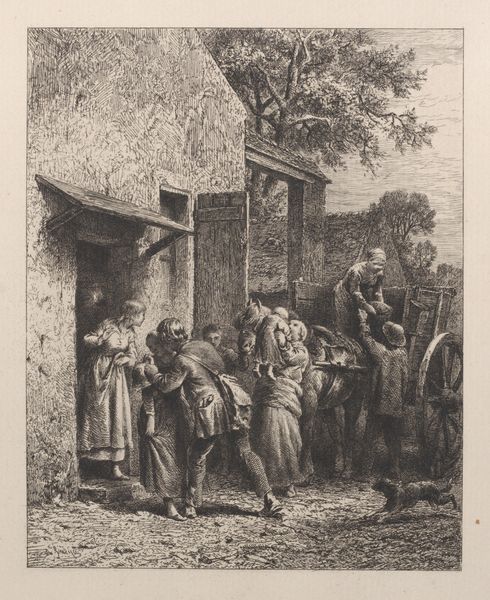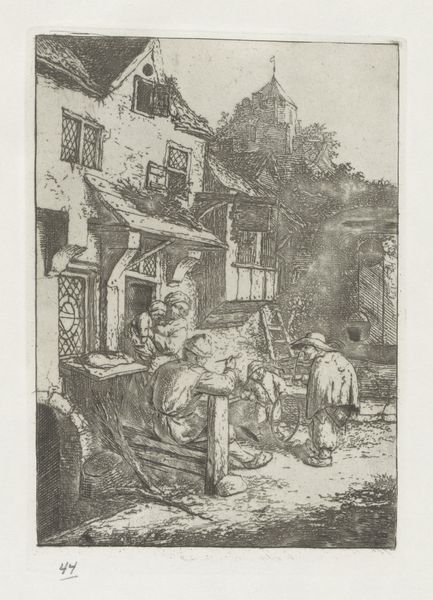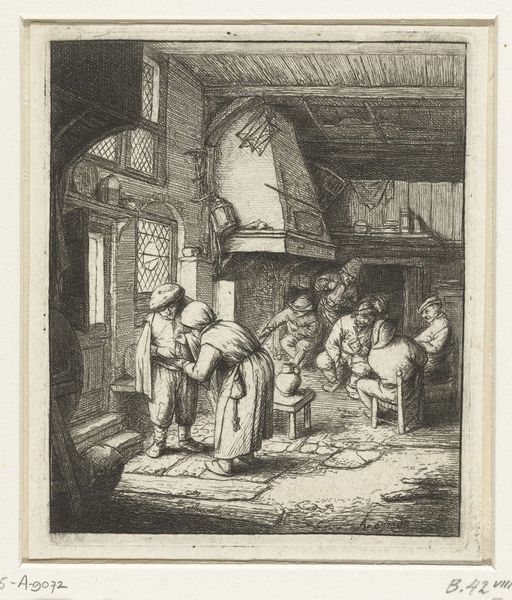
drawing, print, etching, ink
#
drawing
#
dutch-golden-age
# print
#
etching
#
figuration
#
ink
#
child
#
group-portraits
#
genre-painting
Dimensions: height 103 mm, width 88 mm
Copyright: Rijks Museum: Open Domain
Editor: This etching, "Rondtrekkende muzikanten" or "Wandering Musicians" by Adriaen van Ostade, exists in prints from 1652 up until 1941 and it strikes me as an intimate slice of life. There's a definite emphasis on community, even in its slightly rough and tumble state. What can you tell me about its context? Curator: Well, viewing this piece through a historical lens, Ostade was very interested in depicting peasant life, moving away from idealized versions to portray what some may call "lower class" life as vibrant. Genre scenes like this served a crucial social function. Editor: How so? Curator: They offered viewers – particularly those of a higher social standing – a glimpse into lives often overlooked or romanticized. Consider the growth of cities and a larger urban merchant class during the Dutch Golden Age, this creates a market for paintings showing all levels of the population. Now, does this perpetuate stereotypes or bridge divides? What's your opinion? Editor: That’s a great question. I think maybe a little of both. It’s offering a picture, but one can only wonder about accuracy. Curator: Exactly. The performance by musicians, the visible poverty… Did the artist create this image from genuine social concern, artistic inspiration, or a combination? Also think about the institutions – who purchased works like these and what purpose did it serve? Editor: I see what you mean! Thinking about who gets to "curate" these images becomes just as important as the image itself. Curator: Precisely. Looking at art history allows us to really explore these fascinating ideas and ask pressing questions about a period in time, including what we're *not* being shown. Editor: Absolutely, this has given me so much food for thought about what to look for in other pieces we are covering as well!
Comments
No comments
Be the first to comment and join the conversation on the ultimate creative platform.

